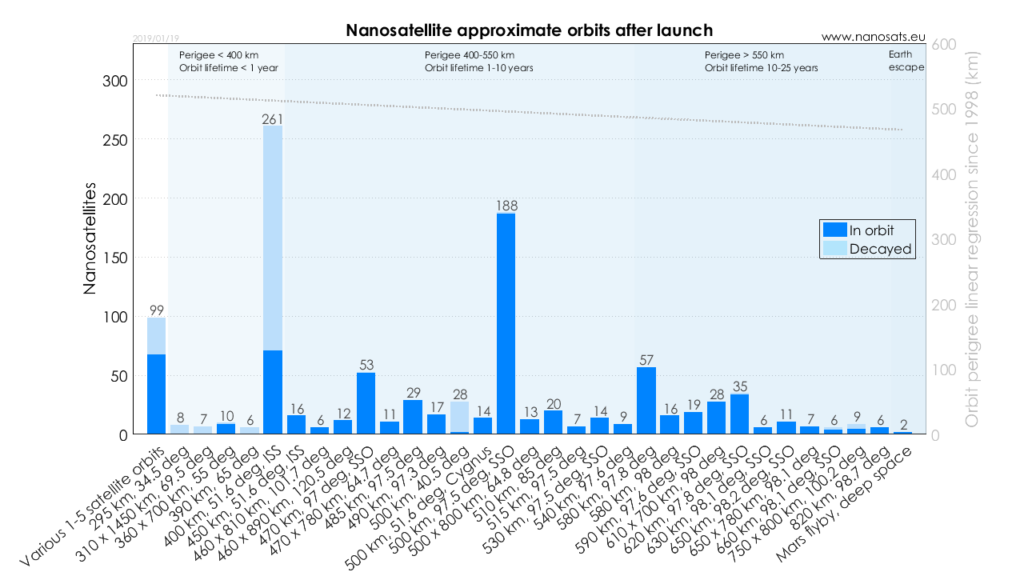There appears to have been a lot of work in the last few years around the “small launch” segment of the spaceflight industry. Lots of companies are designing, building or flying rockets to compete for the market in getting small payloads into LEO, which has previously been done with extra space inside second-stage fairings in larger rockets.
So I’ve been wondering, how many of these have flown to date and what exactly have they been designed to do? Is there more going on in these small satellites than minor technical feasibility demonstrations? Do they all have low and quickly degrading orbits that don’t even allow them to do much useful work? How do they compare to early satellites from the first decades of spaceflight?
Via the wikipedia page on Cuebsats, I came across this astoundingly detailed website / database of cubesats which appears to be comprehensive: http://www.nanosats.eu/

CubeSat Launch Initiative Overview Page
The below chart of companies with constellation of small satellites is a little bit staggering, even if you only look at those companies which have already managed constellations of some size.

So, you can see that most of the satellites were launched by Planet and they’ve been doing so for years. They seem to have built a business on small, short lived 3U cubesats and selling access to the remote sensing data they collect. They offer some free access to their data for educators and students here.

The example here from Planet’s page for academics shows “Reef Atoll Damage” in the South China Sea, which is an interesting way to describe what could just as well be Chinese Naval base construction in one of the most hotly contested bodies of water in the world, in a clear nod to the ongoing and obvious important of remote sensing in all sorts of intelligence work. (Especially as one of their products allows you to request imaging of a particular area on demand. Why be a superpower with billions of dollars in clandestine remote sensing operations when you can just subcontract the whole thing out to these guys?)
Most of the orbits are fairly quick decaying, as you’d expect, but there have recently been two Deep Space cube-sats that were used as relays in the recent landing of NASA’s Mars Insight Lander. (As seen in this rendering below, via Wikipedia.)

The graphs below from Nanosats.eu gives a great idea of just how long any of these satellites can expect to stay up for given their orbits.

Most of those SSO (Sun Synchronous Orbit) satellites at 500km do various kinds of Earth-Observing work in roughly polar orbits, such as Spire, which appears to do weather and ship tracking in a slightly different remote sensing vein from Planet. Spire has a much more cyberpunk website and I approve of their aesthetic choices.


As new launch vehicles come online and the number of launches likely grow, I look forward to seeing more and more companies like Planet and Spire, ideally with a name like Wintermute.
Space Launch Report’s Worldwide Space Launch Box Score put 2018 at 114 launches, the first time since 1990 that there have been more than 100 launches in a year. I hope 2019 sees a similar worldwide cadence of 2 launches a week.